Abstract
Antibody titers to common enterobacterial antigen (CA) were determined in 141 controls and in acute serum specimens from 206 patients with bacteremia caused by gram-negative organisms. Levels of antibody to CA ranged from 1:160 to 1:2,560 in 95% of control subjects. These levels did not differ significantly from those in acute serum specimens from bacteremic patients with “nonfatal underlying diseases.” Patients with more severe underlying diseases, “ultimately fatal underlying diseases,” tended to have lower titers of antibody to CA. Human antibody to CA was predominantly of the 19S variety. A fourfold change in antibody titer to CA was observed in convalescent serum obtained after bacteremia in 32% of 108 patients studied. Correlation of titers of antibody to CA in acute serum specimens with the frequency of occurrence of shock or death failed to demonstrate any protective activity of antibody to CA. These complications occurred equally as often in patients with high titers of antibody to CA as in those with low titers.
Full text
PDF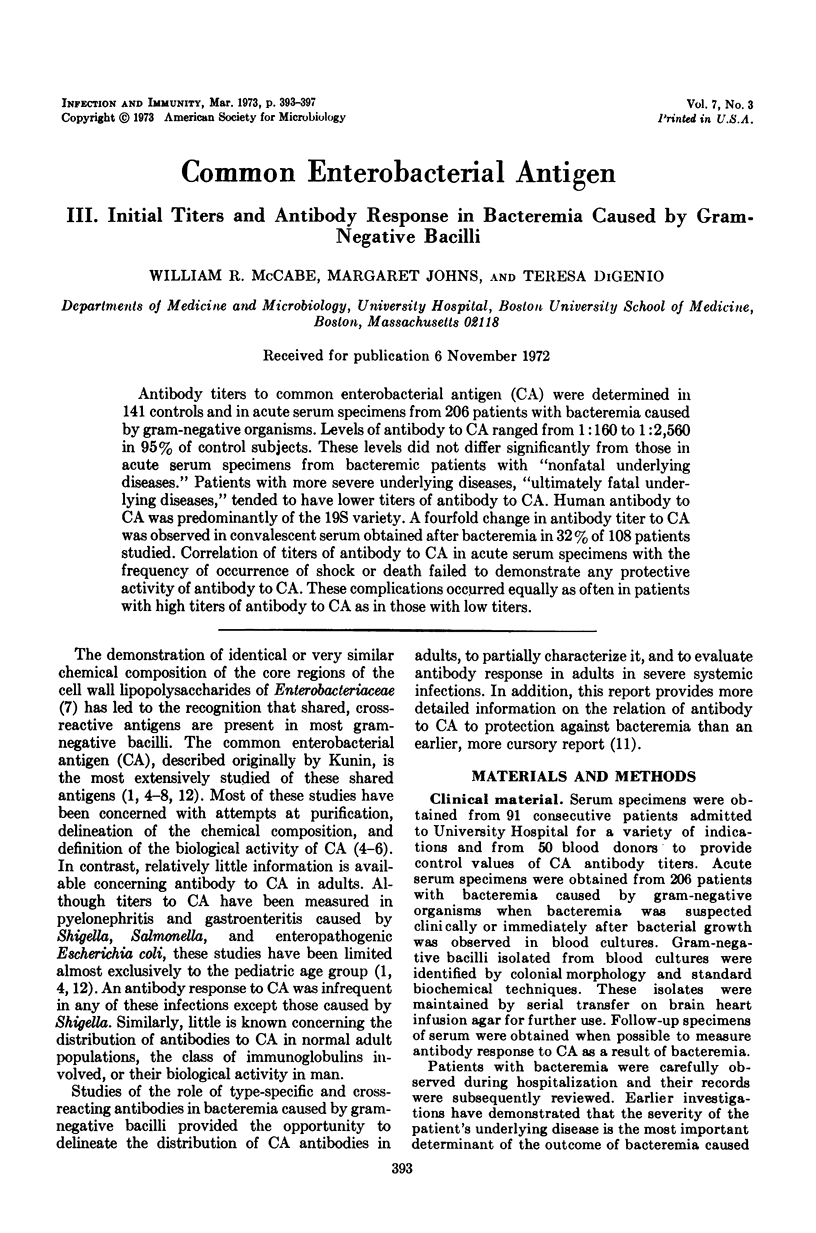
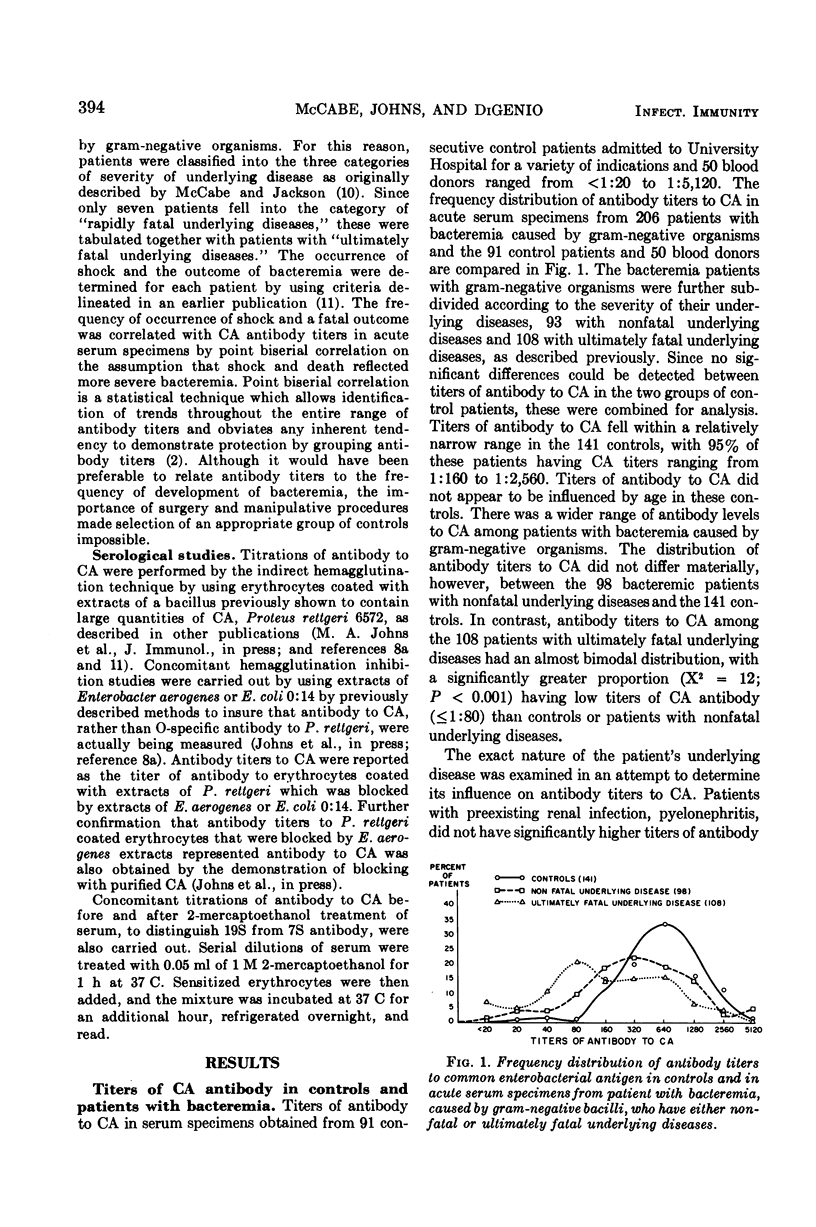
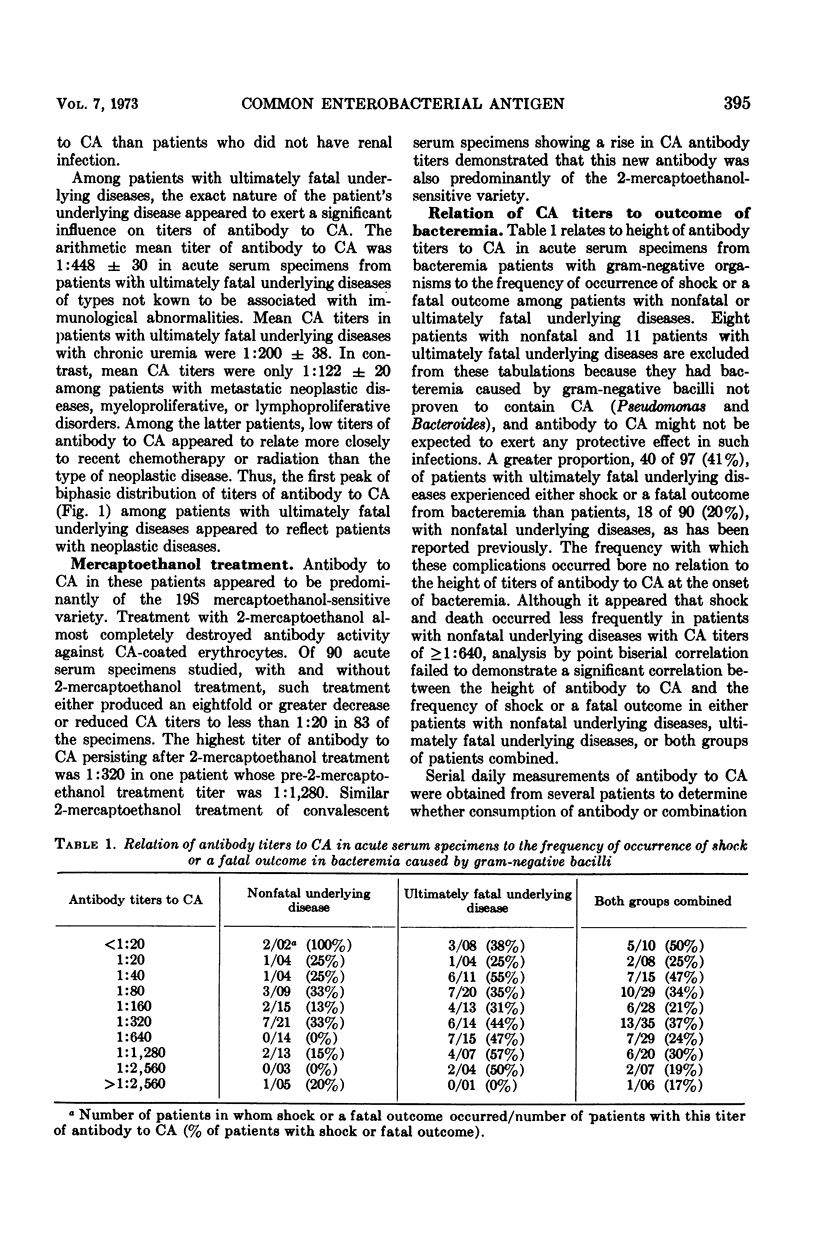
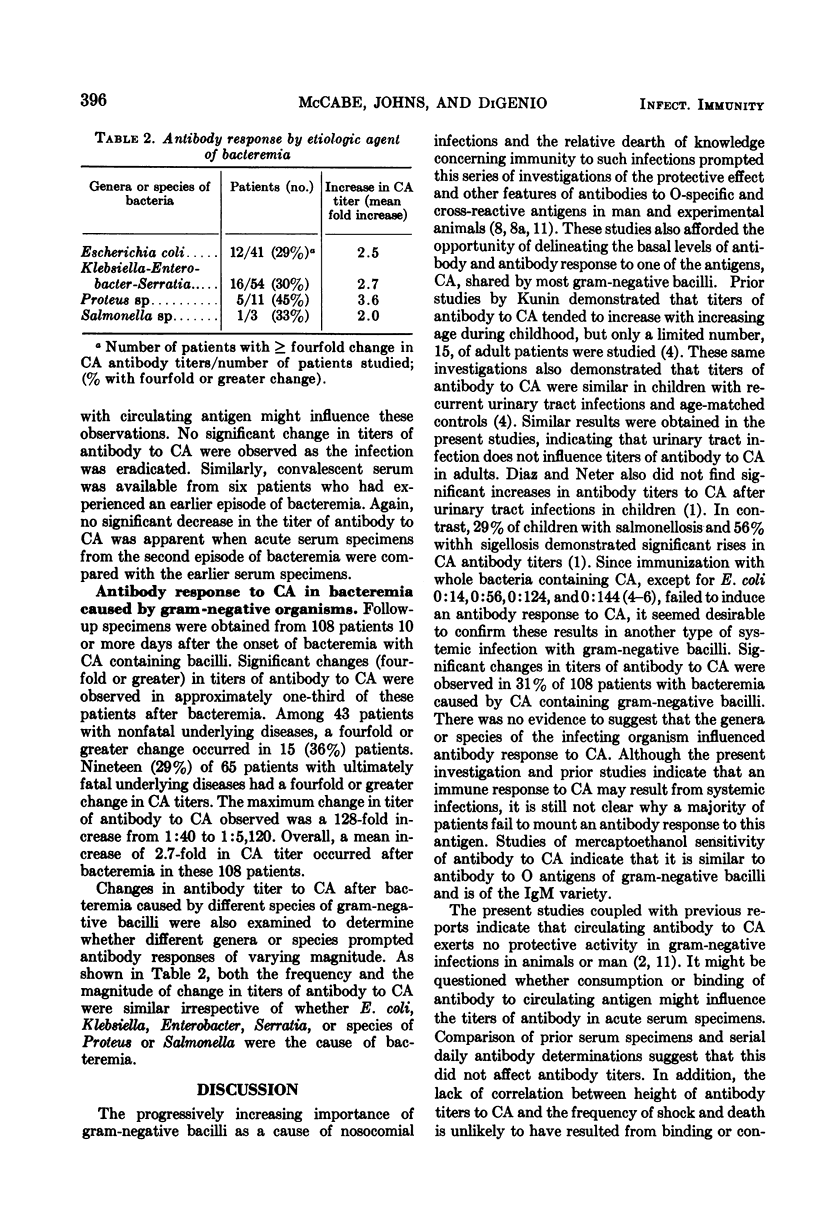
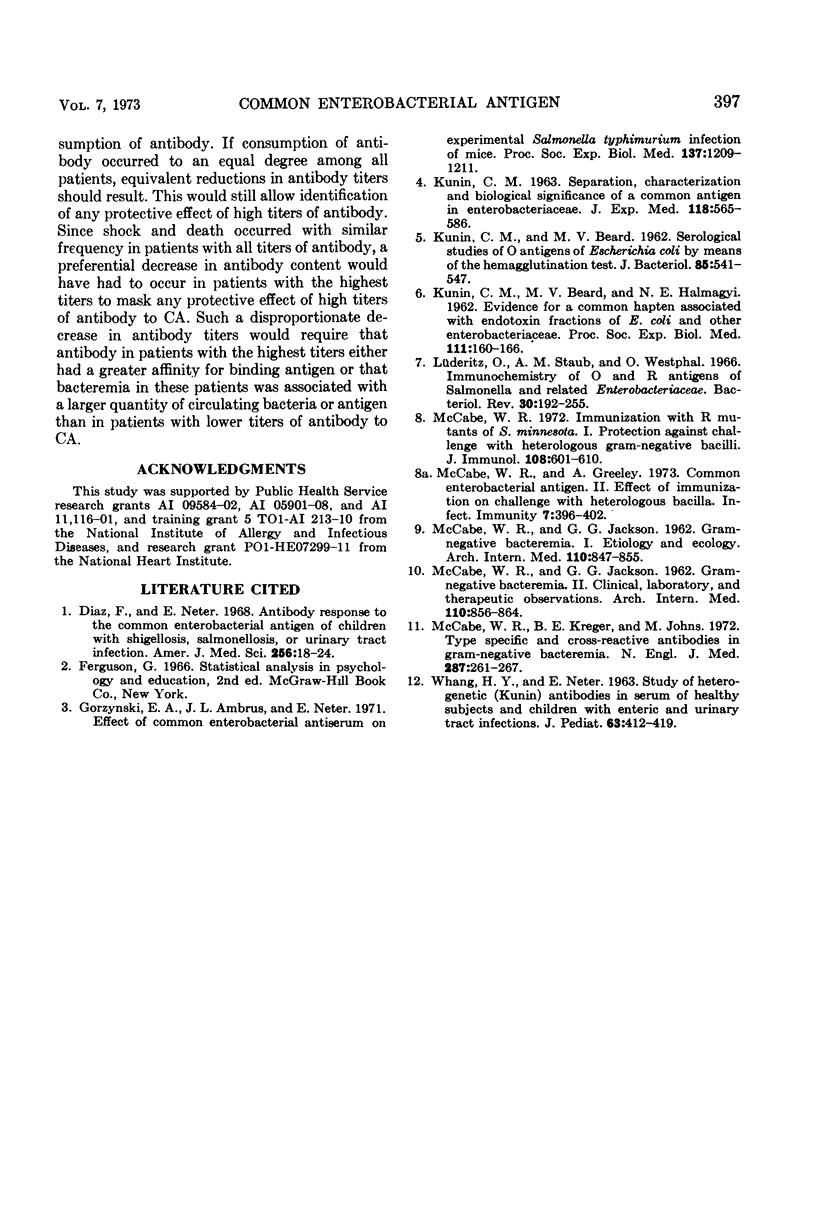
Selected References
These references are in PubMed. This may not be the complete list of references from this article.
- Diaz F., Neter E. Antibody response to the common enterobacterial antigen of children with shigellosis, salmonellosis or urinary tract infection. Am J Med Sci. 1968 Jul;256(1):18–24. doi: 10.1097/00000441-196807000-00003. [DOI] [PubMed] [Google Scholar]
- Gorzynski E. A., Ambrus J. L., Neter E. Effect of common enterobacterial antiserum on experimental Salmonella typhimurium infection of mice. Proc Soc Exp Biol Med. 1971 Sep;137(4):1209–1212. doi: 10.3181/00379727-137-35757. [DOI] [PubMed] [Google Scholar]
- KUNIN C. M., BEARD M. V. SEROLOGICAL STUDIES OF O ANTIGENS OF ESCHERICHIA COLI BY MEANS OF THE HEMAGGLUTINATION TEST. J Bacteriol. 1963 Mar;85:541–548. doi: 10.1128/jb.85.3.541-548.1963. [DOI] [PMC free article] [PubMed] [Google Scholar]
- KUNIN C. M. SEPARATION, CHARACTERIZATION, AND BIOLOGICAL SIGNIFICANCE OF A COMMON ANTIGEN IN ENTEROBACTERIACEAE. J Exp Med. 1963 Oct 1;118:565–586. doi: 10.1084/jem.118.4.565. [DOI] [PMC free article] [PubMed] [Google Scholar]
- Lüderitz O., Staub A. M., Westphal O. Immunochemistry of O and R antigens of Salmonella and related Enterobacteriaceae. Bacteriol Rev. 1966 Mar;30(1):192–255. doi: 10.1128/br.30.1.192-255.1966. [DOI] [PMC free article] [PubMed] [Google Scholar]
- McCabe W. R. Immunization with R mutants of S. Minnesota. I. Protection against challenge with heterologous gram-negative bacilli. J Immunol. 1972 Mar;108(3):601–610. [PubMed] [Google Scholar]
- McCabe W. R., Kreger B. E., Johns M. Type-specific and cross-reactive antibodies in gram-negative bacteremia. N Engl J Med. 1972 Aug 10;287(6):261–267. doi: 10.1056/NEJM197208102870601. [DOI] [PubMed] [Google Scholar]
- WHANG H. Y., NETER E. STUDY OF HETEROGENETIC (KUNIN) ANTIBODIES IN SERUM OF HEALTHY SUBJECTS AND CHILDREN WITH ENTERIC AND URINARY TRACT INFECTIONS. J Pediatr. 1963 Sep;63:412–419. doi: 10.1016/s0022-3476(63)80429-1. [DOI] [PubMed] [Google Scholar]


